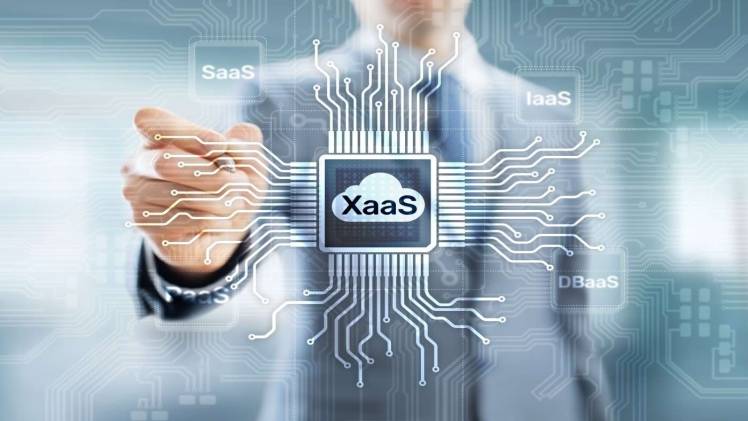
The business landscape is evolving rapidly, and traditional models are being disrupted by innovative approaches. One such approach gaining significant traction is the “Everything-as-a-Service” (XaaS) model. XaaS offers businesses the flexibility to access and utilize various services, products, or software on-demand, without the need for significant upfront investment
As XaaS models become increasingly popular, industries like Asset Finance and equipment leasing need to adapt to new revenue models and embrace digital payment solutions to stay ahead of the curve.
The growth of the XaaS market is evident from various surveys and studies. According to a report by MarketsandMarkets, the XaaS market is expected to reach a value of $344.3 billion by 2026, growing at a compound annual growth rate (CAGR) of 17.4% from 2021 to 2026. This indicates a strong market demand and increasing adoption of XaaS across industries.
Industries like Asset Finance and equipment leasing are not immune to this shift. In a survey conducted by Gartner, it was found that 42% of businesses in the asset finance industry are planning to adopt a subscription-based business model within the next two years. This indicates a clear shift towards XaaS revenue models as businesses recognize the benefits of flexibility, scalability, and reduced upfront costs.
Additionally, a survey by Deloitte reveals that 81% of businesses in the equipment leasing industry believe that XaaS models will significantly impact their industry over the next three years. This reflects the growing recognition of the potential benefits that XaaS offers, such as increased customer satisfaction, recurring revenue streams, and the ability to deliver innovative solutions to meet changing customer needs.
The Rise of Digital Payments in XaaS
Digital payments have emerged as the preferred choice for consumers across various industries. Whether it’s online shopping, subscription-based services, or even utility payments, customers are increasingly opting for the convenience and security offered by digital payment methods. The benefits of digital payments are numerous:
- Convenience and Efficiency: Digital payments eliminate the need for physical checks or cash, making transactions quicker and more efficient. Customers can make payments anytime, anywhere, using their preferred device, streamlining the entire payment process.
- Enhanced Security: Digital payments offer robust security measures, such as encryption and tokenization, ensuring that sensitive payment information remains protected. These builds trust and confidence among customers, reducing the risk of fraud and unauthorized transactions.
- Seamless Integration with Subscription Models: XaaS often relies on subscription-based revenue models, where customers pay recurring fees for access to services or software. Digital payments seamlessly integrate with these models, automating recurring billing and ensuring uninterrupted service delivery.
- Data Insights and Revenue Management: Digital payments provide valuable data insights that can be leveraged for revenue management and business optimization. Detailed transaction data, customer preferences, and payment patterns can inform decision-making, allowing businesses to tailor their offerings and improve customer experience.
Governments across the world, including the European Union, are increasingly recognizing the numerous benefits of digital payments and are actively pushing for their widespread adoption. As the global business landscape continues to evolve, governments understand the pivotal role that digital payments play in fostering economic growth, improving financial inclusion, and enhancing overall efficiency in business transactions.
In the European Union (EU), particularly, there has been a concerted effort to promote the use of digital payments. One significant initiative is the Revised Payment Services Directive (PSD2), which aims to enhance payment security and encourage innovation in the payments industry. Under PSD2, banks are required to provide third-party providers with access to customer accounts through Application Programming Interfaces (APIs). This allows for the development of innovative payment services and fosters healthy competition within the financial sector.
Apart from the EU, many other governments worldwide are taking proactive measures to promote digital payments. For instance, in India, the government’s demonetization move in 2016 significantly accelerated the adoption of digital payment methods. Initiatives like the Unified Payments Interface (UPI) and the Bharat Bill Payment System (BBPS) have further facilitated the shift towards digital transactions, fostering financial inclusion and creating a more cashless economy.
In China, the rapid adoption of digital payment platforms like Alipay and WeChat Pay has transformed the way people conduct transactions, both in-person and online. The Chinese government has supported the growth of these payment platforms, recognizing the benefits they bring in terms of efficiency, transparency, and improved tracking of financial transactions.
Building Capabilities for Digital Payments in Asset Finance and Equipment Leasing
To prepare for the future of XaaS and embrace digital payments, Asset Finance and equipment leasing software businesses need to build specific capabilities:
- Implementing Digital Payment Gateways: Investing in robust digital payment gateways enables businesses to securely accept a wide range of payment methods. This includes credit and debit cards, mobile wallets, and online banking transfers. Integration with reliable payment processors ensures smooth and seamless transactions.
- Subscription Billing Software: A cloud-based asset finance software like the Odessa Platform is a subscription billing software that is essential for businesses operating on recurring revenue models. It automates the billing process, tracks subscription lifecycles, and manages payment schedules, ensuring accurate and timely invoicing. This software also facilitates upgrades, downgrades, and add-on services, providing a seamless customer experience.
- Security and Compliance: Given the sensitive nature of financial transactions, businesses must prioritize security and compliance. Implementing robust data security measures, including encryption, firewalls, and access controls, protects customer payment information. Compliance with industry regulations such as the Payment Card Industry Data Security Standard (PCI DSS) is also critical.
- Embracing Mobile Payment Solutions: With the increasing adoption of smartphones and mobile applications, businesses should consider integrating mobile payment solutions into their operations. Mobile wallets and payment apps provide convenience and accessibility for customers, driving customer satisfaction and engagement.
Digital Payments are the future of XaaS
As XaaS models reshape the business landscape, asset finance and equipment leasing businesses must adapt to new revenue models and embrace digital payments to stay competitive. The benefits of digital payments, such as convenience, security, and improved revenue management, make them the preferred choice for customers.
By implementing digital payment gateways and subscription billing software, and ensuring security and compliance, businesses can position themselves for success in the evolving world of XaaS. Embracing digital payments is not just a trend but a strategic move that enables businesses to meet customer expectations, enhance operational efficiency, and future-proof their revenue models in an increasingly digital world.



